Termination of atrial fibrillation using pulsed low-energy far-field stimulation
- PMID: 19635972
- PMCID: PMC2867100
- DOI: 10.1161/CIRCULATIONAHA.108.825091
Termination of atrial fibrillation using pulsed low-energy far-field stimulation
Abstract
Background: Electrically based therapies for terminating atrial fibrillation (AF) currently fall into 2 categories: antitachycardia pacing and cardioversion. Antitachycardia pacing uses low-intensity pacing stimuli delivered via a single electrode and is effective for terminating slower tachycardias but is less effective for treating AF. In contrast, cardioversion uses a single high-voltage shock to terminate AF reliably, but the voltages required produce undesirable side effects, including tissue damage and pain. We propose a new method to terminate AF called far-field antifibrillation pacing, which delivers a short train of low-intensity electric pulses at the frequency of antitachycardia pacing but from field electrodes. Prior theoretical work has suggested that this approach can create a large number of activation sites ("virtual" electrodes) that emit propagating waves within the tissue without implanting physical electrodes and thereby may be more effective than point-source stimulation.
Methods and results: Using optical mapping in isolated perfused canine atrial preparations, we show that a series of pulses at low field strength (0.9 to 1.4 V/cm) is sufficient to entrain and subsequently extinguish AF with a success rate of 93% (69 of 74 trials in 8 preparations). We further demonstrate that the mechanism behind far-field antifibrillation pacing success is the generation of wave emission sites within the tissue by the applied electric field, which entrains the tissue as the field is pulsed.
Conclusions: AF in our model can be terminated by far-field antifibrillation pacing with only 13% of the energy required for cardioversion. Further studies are needed to determine whether this marked reduction in energy can increase the effectiveness and safety of terminating atrial tachyarrhythmias clinically.
Figures


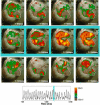
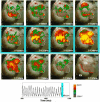
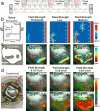
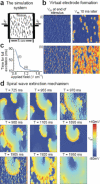
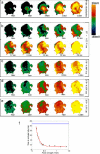
Similar articles
-
Multistage electrotherapy delivered through chronically-implanted leads terminates atrial fibrillation with lower energy than a single biphasic shock.J Am Coll Cardiol. 2014 Jan 7-14;63(1):40-8. doi: 10.1016/j.jacc.2013.07.098. Epub 2013 Sep 26. J Am Coll Cardiol. 2014. PMID: 24076284 Free PMC article.
-
Atrial activation time and pattern of linear triple-site vs. single-site atrial pacing after cardioversion in patients with atrial fibrillation.Europace. 2010 Apr;12(4):508-16. doi: 10.1093/europace/eup407. Epub 2010 Jan 6. Europace. 2010. PMID: 20056596
-
Termination of sustained atrial flutter and fibrillation using low-voltage multiple-shock therapy.Heart Rhythm. 2011 Jan;8(1):101-8. doi: 10.1016/j.hrthm.2010.10.018. Epub 2010 Oct 19. Heart Rhythm. 2011. PMID: 20969974 Free PMC article.
-
The role of pacing in rhythm control and management of atrial fibrillation.J Interv Card Electrophysiol. 2007 Mar;18(2):159-86. doi: 10.1007/s10840-007-9087-z. Epub 2007 May 2. J Interv Card Electrophysiol. 2007. PMID: 17473977 Review.
-
Programming Pacemakers to Reduce and Terminate Atrial Fibrillation.Curr Cardiol Rep. 2019 Sep 13;21(10):127. doi: 10.1007/s11886-019-1214-9. Curr Cardiol Rep. 2019. PMID: 31520271 Review.
Cited by
-
Cardiac response to low-energy field pacing challenges the standard theory of defibrillation.Circ Arrhythm Electrophysiol. 2015 Jun;8(3):685-93. doi: 10.1161/CIRCEP.114.002661. Epub 2015 Mar 15. Circ Arrhythm Electrophysiol. 2015. PMID: 25772543 Free PMC article.
-
Probing field-induced tissue polarization using transillumination fluorescent imaging.Biophys J. 2010 Oct 6;99(7):2058-66. doi: 10.1016/j.bpj.2010.07.057. Biophys J. 2010. PMID: 20923639 Free PMC article.
-
Atrial burst pacing with biphasic and monophasic waveforms for atrial fibrillation.Ann Noninvasive Electrocardiol. 2012 Jan;17(1):22-7. doi: 10.1111/j.1542-474X.2011.00477.x. Ann Noninvasive Electrocardiol. 2012. PMID: 22276625 Free PMC article.
-
Optical Ultrastructure of Large Mammalian Hearts Recovers Discordant Alternans by In Silico Data Assimilation.Front Netw Physiol. 2022 Apr 13;2:866101. doi: 10.3389/fnetp.2022.866101. eCollection 2022. Front Netw Physiol. 2022. PMID: 36926104 Free PMC article.
-
Competing Mechanisms of Stress-Assisted Diffusivity and Stretch-Activated Currents in Cardiac Electromechanics.Front Physiol. 2018 Dec 3;9:1714. doi: 10.3389/fphys.2018.01714. eCollection 2018. Front Physiol. 2018. PMID: 30559677 Free PMC article.
References
-
- Waktare JE. Cardiology patient page. Atrial fibrillation. Circulation. 2002;106:14–16. - PubMed
-
- Heart Disease and Stroke Statistics—2007 Update. Circulation. 2007;115:e69–e171. - PubMed
-
- Nattel S, Opie LH. Controversies in atrial fibrillation. Lancet. 2006;367:262–272. - PubMed
-
- Wijffels M, Kirchhof C, Dorland R, Allessie MA. Atrial fibrillation begets atrial fibrillation: a study in awake chronically instrumented goats. Circulation. 1995;92:1954–1968. - PubMed
-
- Ideker RE, Zhou X, Knisley SB. Correlation among fibrillation, defibrillation, and cardiac pacing. Pacing Clin Electrophysiol. 1995;18:512–525. - PubMed
Publication types
MeSH terms
Grants and funding
LinkOut - more resources
Full Text Sources
Other Literature Sources
Medical

